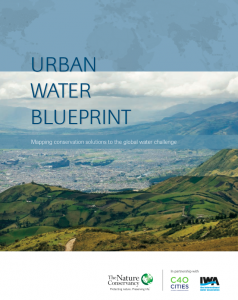This report addresses a critical issue facing mayors in cities around the world: access to clean and adequate water supplies. The growth of urban populations, coupled with incidences of sudden climate stress and long-term land degradation of drinking watersheds, pose increasing risks to urban water supply with serious implications for the future health and well-being of urban residents. Without water, cities cannot thrive.
The pages to follow show us that one in four of the world’s largest cities, representing more than 800 million people, are currently water stressed1 and many more face scarcity in terms of water quality. And C40’s own research tells us that 98 percent of our global network of megacities report that the current or anticipated effects of climate change present significant risks to their city.
In response, mayors are investing in infrastructure and delivering a range of policies, projects and programs to secure clean water for their citizens. But there are significant, creative and untapped opportunities for further action to conserve drinking water sources, which often lie outside the jurisdictional boundaries of local governments.
Through case studies representing five proven strategies to watershed conservation — protecting both the quantity and quality of urban water supplies — this report demonstrates that investment in natural infrastructure to preserve drinking watersheds is both an economically viable and environmentally sound approach available to developed and developing cities alike.


